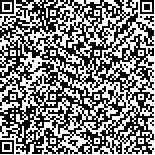| 引用本文: |
杨瑞霞,何亚州,王龙龙,张安东.温阳贴贴敷涌泉穴治疗慢性心力衰竭阳虚证的临床疗效观察[J].湖南中医药大学学报,2022,42(10):1705-1710[点击复制] |
|
| |
|
|
| 本文已被:浏览 2831次 下载 1418次 |
| 温阳贴贴敷涌泉穴治疗慢性心力衰竭阳虚证的临床疗效观察 |
| 杨瑞霞,何亚州,王龙龙,张安东 |
| (广西国际壮医医院, 广西 南宁 530201) |
| 摘要: |
| 目的 观察温阳贴贴敷涌泉穴对慢性心力衰竭(chronic heart failure, CHF)阳虚证患者心功能和心肌重构的影响。方法 将141例患者随机分为对照组(71例)和观察组(70例)。对照组给予西医综合治疗,观察组在对照组基础给予温阳贴贴敷涌泉穴,于晚上睡前贴敷,次日清晨取下,隔2日贴敷1次,连续24周。比较治疗前后心肌重构和心功能参数[左室射血分数(left ventricularejection fraction, LVEF)、心脏指数(cardiac index, CI)、心肌能量消耗值(myocardial energy expenditure, MEE)、左室舒张末期内径(left ventricular end-diastolic diameter, LVEDd)、左室质量指数(left ventricular mass index, LVMI)、左室重构指数(left ventricular remodeling index, LVRI)];比较治疗前后6 min步行试验(6-min walk test, 6MWT)、Lee氏心衰评分、阳虚证评分和明尼苏达心衰生活质量调查表(Minnesota living with heart failure questionnaire, MLHFQ)评分;检测治疗前后外周血miRNA-208、miRNA-21、N末端B型利钠肽原(N-terminal pro-brain natriuretic peptide, NT-proBNP)、转化生长因子-β1(transforming growth factor-β1, TGF-β1)、半乳糖凝集素-3(Galectin-3)、基质金属蛋白酶-2(matrix metalloproteinase-2, MMP-2)和基质金属蛋白酶-9(matrix metalloproteinase-9, MMP-9)水平。结果 治疗后,两组患者LVEF、CI和LVRI升高(P<0.05),且观察组均高于对照组(P<0.05);治疗后,两组患者MEE、LVEDd和LVMI均降低(P<0.05),且观察组MEE和LVMI低于对照组(P<0.05)。治疗后,两组miRNA-208、miRNA-21和NT-proBNP水平明显下降(P<0.05),且观察组均低于对照组(P<0.05)。治疗后,两组患者Lee氏心衰、阳虚证和MLHFQ评分均明显降低(P<0.05),且观察组均低于对照组(P<0.05);治疗后,两组患者6 min步行距离增加(P<0.05),且观察组多于对照组(P<0.05)。治疗后,两组TGF-β1、Galectin-3、MMP-2和MMP-9水平明显下降(P<0.05),且观察组均低于对照组(P<0.05)。观察组临床疗效总有效率为92.19%,高于对照组的79.69%(P<0.05)。结论 温阳贴贴敷涌泉穴辅助治疗CHF阳虚证患者可改善心功能,减轻心衰症状,并能延缓/逆转心肌重构作用,临床疗效优于单纯西医治疗。 |
| 关键词: 慢性心力衰竭 阳虚证 温阳贴 涌泉穴 穴位敷贴 心肌纤维化 心肌重构 |
| DOI:10.3969/j.issn.1674-070X.2022.10.018 |
| 投稿时间:2022-03-28 |
| 基金项目:广西自治区中医药管理局科技项目(210210365);2018年博士科研启动基金项目(2018BS060)。 |
|
| Clinical observation of treating chronic heart failure with yang deficiency syndrome by applying Warm Yang Paste to “Yongquan” (KI1) |
| YANG Ruixia,HE Yazhou,WANG Longlong,ZHANG Andong |
| (Guangxi International Zhuang Medical Hospital, Nanning, Guangxi 530201, China) |
| Abstract: |
| Objective To observe the effect of applying Warm Yang Paste to "Yongquan" (KI1) on the cardiac function and myocardial remodeling in patients suffering from chronic heart failure (CHF) with yang deficiency syndrome. Methods A total of 141 patients were randomly divided into control group (71 cases) and observation group (70 cases). The control group received comprehensive western medicine treatment. The observation group were given Warm Yang Paste to the "Yongquan" (KI1) on the basis of control group. The additional Warm Yang Pastes were applied at night before sleep, then removed the next morning, and they were administered once every 2 days for the consecutive 24 weeks. The myocardial remodeling and cardiac function parameters [left ventricular ejection fraction (LVEF), cardiac index (CI), myocardial energy expenditure (MEE), left ventricular end diastolic diameter (LVEDd), left ventricular mass index (LVMI), left ventricular remodeling index (LVRI)] before and after treatment were compared. The scores of 6-min walk test (6MWT), Lee's heart failure, yang deficiency syndrome, and minnesota heart failure quality of life questionnaire (MLHFQ) before and after treatment were compared. The levels of peripheral blood miRNA-208, miRNA-21, N-terminal pro B-type natriuretic peptide (NT-proBNP), transforming growth factor-β1 (TGF-β1), galectin-3, matrix metalloproteinase-2 (MMP-2) and matrix metalloproteinase-9 (MMP-9) levels were tested. Results After treatment, the LVEF, CI and LVRI of two groups increased (P<0.05), and the data in the observation group were higher than those of control group after treatment (P<0.05). After treatment, the MEE, LVEDd and LVMI of two groups both decreased (P<0.05), while the MEE and LVMI of observation group were lower than those of control group (P<0.05). The levels of miRNA-208, miRNA-21 and NT-proBNP in the two groups decreased significantly after treatment (P<0.05), and those of observation group were lower than those of control group after treatment (P<0.05). After treatment, the scores of Lee's heart failure, yang deficiency syndrome and MLHFQ of two groups were both significantly reduced (P<0.05), and those of the observation group were lower than the control group (P<0.05). The distances of 6-min walking in two groups increased after treatment (P<0.05), and the increase degree in observation group was more than that in control group (P<0.05). After treatment, the levels of TGF-β1, Galectin-3, MMP-2 and MMP-9 in two groups decreased significantly (P<0.05), with the levels in the observation group lower than those in the control group (P<0.05). The total effective rate of clinical pracitice in observation group was 92.19%, higher than 79.69% in the control group (P<0.05). Conclusion Applying Warm Yang Paste to "Yongquan" (KI1) as an adjuvant treatment for CHF patients with yang deficiency syndrome may improve the heart function, relieve symptoms of heart failure and delay or reverse myocardial remodeling. The clinical efficacy was better than that of only using western medicine treatment. |
| Key words: chronic heart failure yang deficiency syndrome Warm Yang Paste "Yongquan" (KI1) acupoint application myocardial fibrosis myocardial remodeling |
|

二维码(扫一下试试看!) |
|
|
|
|




